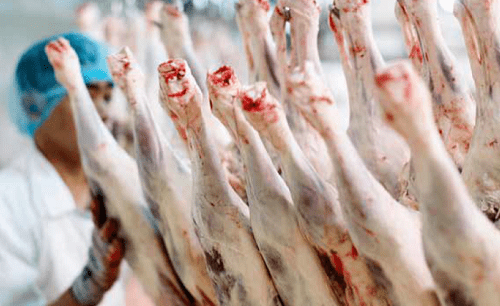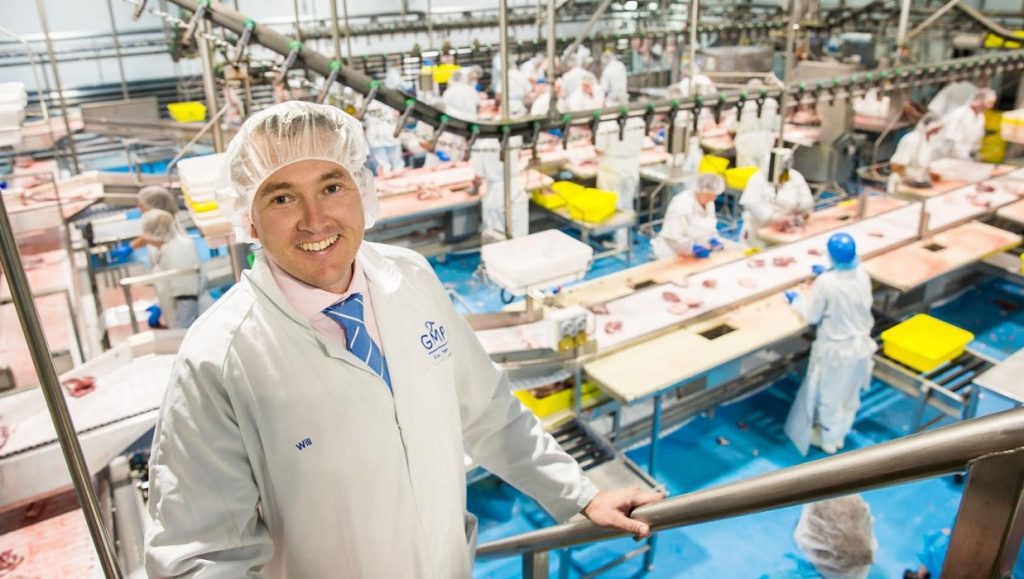
LAMB producers have lost up to $18 a carcase due to trimming because of arthritis, according to a trim severity scoring system being developed by Gundagai Meat Processors.
GMP has undertaken a pilot study to develop a new trim severity scoring system for arthritis to estimate producer revenue losses and provide enhanced feedback.
The long-term aim is to enable individual carcase information related to disease and defects to be shared with producers, through Livestock Data Link rather than mob-based feedback.
Describing the variation in costs associated with disease on an individual basis, arthritis was used as a case study to demonstrate the use of retain rail trim information for feedback systems.
GMP client research advisor, Michelle Henry, said arthritis the major cause of lamb carcase trimming at GMP and its cost is underestimated by producers due to a lack of feedback.
“We don’t have any particular view on what producers should and shouldn’t be doing on farm; however, if we can report on the extent of a problem that may be occurring, producers can then make decisions on what is right for them.”
As part of her thesis at Charles Sturt University, Honours student Paige Mazoudier, developed a trim severity scoring system for arthritis by quantifying carcase loss, the components that were trimmed (i.e. shank or leg) and the position on the carcase (i.e. forequarter or hindquarter, left or right).
From mid-February 2019 to early July 2019, data was collected in five week-long blocks, recording carcase components removed due to arthritis for 217 of the 42,164 lamb carcases observed.
Carcase losses were highly correlated to individual trim components which was used to derive an arthritis severity scoring system: score 1— any forequarter shank; 2 – any hind quarter shank; 3 – any forequarter leg; and 4 – any hind quarter leg.
The estimated carcase losses ranged from 1.6% to 10.0% of hot standard carcase weight (HSCW), which equated to 0.37kg to 2.31kg trimmed.
At an over-the-hooks carcase price of $7.83/kg and an average HSCW of 23.13kg, producer revenue losses per carcase ranged from $2.95 to $18.08.
Revenue losses drive change
Dr Henry said current producer feedback didn’t always correspond into actions on farm to reduce disease and defect.
“However, understanding revenue losses due to disease provides a financial incentive to drive change, to reduce risk of disease and improve productivity.
“Recording on an individual basis would allow us to provide producers with more accurate DEXA feedback to inform disease and defect on farm, such as identifying if a single carcase has several diseases associated with it,” Dr Henry said.
“If an individual carcase has been heavily trimmed and is of lesser weight due to disease and defect, then we want to be able to be transparent with the producer and provide that accurate feedback.”
Further investigations are required to include the removal of multiple limbs in the arthritis severity scoring system and the financial impact of multiple diseases, GMP said. While the location of inspection and recording should be taken into consideration for each disease, real-time recording on an individual carcase basis is more accurate than mob-based estimates of disease prevalence.
Individual feedback vs a mob-based system
“Currently, the information we provide through Livestock Data Link (LDL) is part of the National Sheep Health Monitoring Project and is mob-based,” Dr Henry said.
“Our aim is to try to record disease on an individual basis and add an appropriate scoring system to different diseases to improve transparency back to producers.”
Processing plants require assistance to adapt technologies and systems for the recording and provision of health feedback to producers.
Producers should seek support and talk to an animal health professional regarding their feedback to facilitate understanding and assist change to reduce risk of disease and improve productivity.
“This will improve the quality of lamb product entering the supply chain, maximise enterprise profitability, and maintain export market access through compliance with product integrity standards,” Dr Henry said.
“When this project is finalised, the aim is to share accurate feedback through individual carcase information related to disease and defect with producers through LDL.”
While the project is still in the trial phase, GMP will be working with meat inspectors in the near future to record individual carcase information in more detail.
“MLA’s Health for Wealth project, designed to record individual carcase disease and defect feedback is our priority at GMP,” Dr Henry said.
“Over time we may introduce the arthritis severity scoring system to enhance our feedback system.”
GMP is about increasing feedback to producers

Gundagai Meat Processors CEO Will Barton.
Gundagai Meat Processors chief executive officer Will Barton said the company supported anything that improved transparency and feedback to farmers. GMP also had a trim severity scoring index for grass seed that was working well.
“The challenge with arthritis is a little bit different because whilst we might lose a foreshank or a hind shank, or a shoulder or a leg in really serious cases, we don’t pay for it because it is trimmed before it goes over the hook.
“So, in that sense, unless you are really exposed to the saleyards, there is not a lot of value or lost value, because you don’t pay for that loss, unless it is severe and you actually lose a leg or a shoulder, usually it is just a fore shank or a hind shank,” he said.
“What is important is that you can tell the farmers exactly what is happening with their carcases and they might choose that the problem is of such a scale that they want to do something about it.
“That’s really the point, that what we are about at Gundagai Meat Processors, is giving as much feedback as we can to a farmers to help them make up their own mind about that they need to do.”
For more information on the pilot study, contact Michelle Henry via [email protected]
Source: Integrity Systems.

Inspection criteria are very severe in disposition for arthritis. Arthritis is a condition, in the main, of the carpal/tarsal areas of the limb, unless atrophy is evident. The carcase loss is very much amplified by the common severity of trim as described: complete removal of carpal/radius/ulna to the joint of the humerus at the forequarter. Arthritis in the tarsus additionally and commonly necessitates removal of the tibia.
Why cannot arthritis disposition in sheep — where atrophy of the associated muscles is lacking — be confined to the tarsal/carpal joints? Current practice is a huge impost on producers and processors, with carcasses downgraded to Anzac status. Ironically, most processing specifications for hind/fore shanks and bone-in legs require the carpal/tarsal to be “tipped” in the boning room.
Maybe on-plant veterinary approval could be obtained to retain “acceptable arthritic case ovine carcasses” and processed separately under inspectional supervision in the boning room to avoid disfigurement of the carcass?